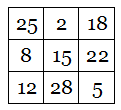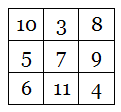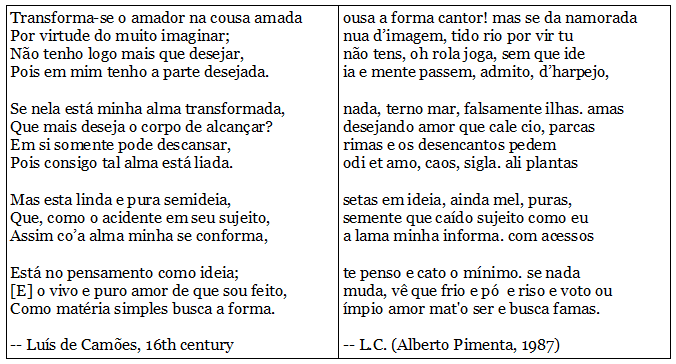There was an old man who said, “Do
Tell me how I’m to add two and two!
I’m not very sure
That it does not make four,
But I fear that is almost too few.”
A mathematician confided
A Möbius strip is one-sided.
You’ll get quite a laugh
If you cut one in half,
For it stays in one piece when divided.
A mathematician named Ben
Could only count modulo ten.
He said, “When I go
Past my last little toe,
I have to start over again.”
By Harvey L. Carter:
‘Tis a favorite project of mine
A new value of π to assign.
I would fix it at 3,
For it’s simpler, you see,
Than 3.14159.
J.A. Lindon points out that 1264853971.2758463 is a limerick:
One thousand two hundred and sixty
four million eight hundred and fifty
three thousand nine hun-
dred and seventy one
point two seven five eight four six three.
From Dave Morice, in the November 2004 Word Ways:
A one and a one and a one
And a one and a one and a one
And a one and a one
And a one and a one
Equal ten. That’s how adding is done.
(From Through the Looking-Glass:)
‘And you do Addition?’ the White Queen asked. ‘What’s one and one and one and one and one and one and one and one and one and one?’
‘I don’t know,’ said Alice. ‘I lost count.’
‘She can’t do Addition,’ the Red Queen interrupted.
An anonymous classic:
![\displaystyle \int_{1}^{\sqrt[3]{3}}z^{2}dz \times \textup{cos} \frac{3\pi }{9} = \textup{ln} \sqrt[3]{e}](https://s0.wp.com/latex.php?latex=%5Cdisplaystyle+%5Cint_%7B1%7D%5E%7B%5Csqrt%5B3%5D%7B3%7D%7Dz%5E%7B2%7Ddz+%5Ctimes+%5Ctextup%7Bcos%7D+%5Cfrac%7B3%5Cpi+%7D%7B9%7D+%3D+%5Ctextup%7Bln%7D+%5Csqrt%5B3%5D%7Be%7D+&bg=ffffff&fg=000&s=0&c=20201002)
The integral z-squared dz
From one to the cube root of three
Times the cosine
Of three pi over nine
Equals log of the cube root of e.
A classic by Leigh Mercer:

A dozen, a gross, and a score
Plus three times the square root of four
Divided by seven
Plus five times eleven
Is nine squared and not a bit more.
UPDATE: Reader Jochen Voss found this on a blackboard at Warwick University:
If M’s a complete metric space
(and non-empty), it’s always the case:
If f’s a contraction
Then, under its action,
Exactly one point stays in place.
And Trevor Hawkes sent this:
A mathematician called Klein
Thought the Möbius strip was divine.
He said if you glue
The edges of two
You get a nice bottle like mine.













